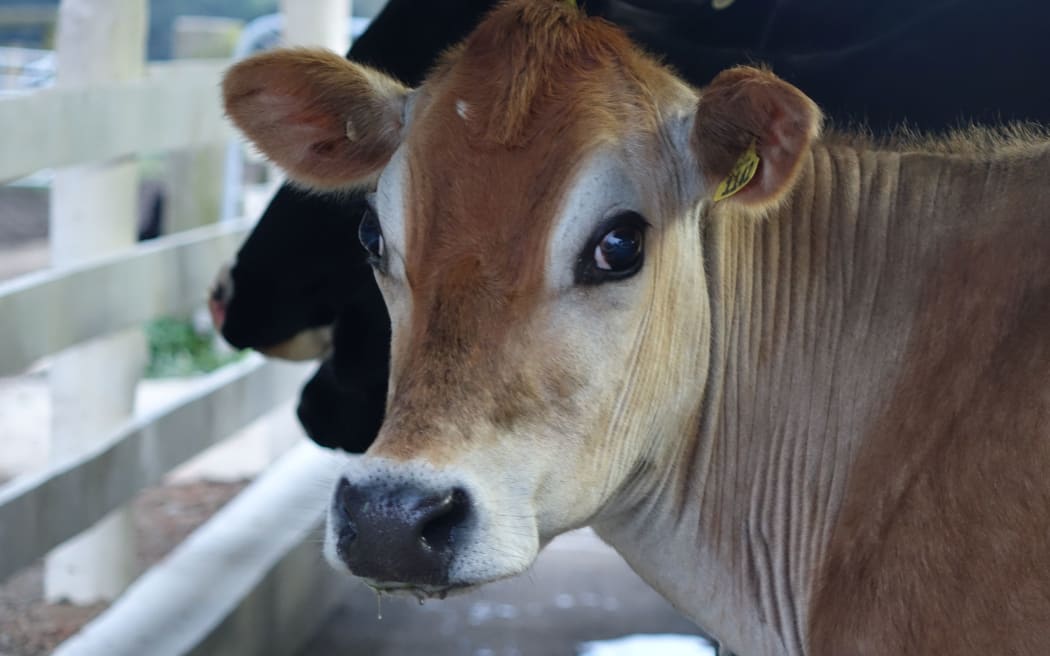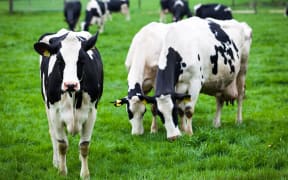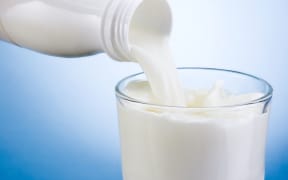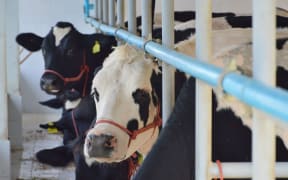The average cow is producing more litres of milk with higher volumes of milk solids than ever before.

The report also found that there are more Holstein-Friesian/Jersey cross-breeds than in previous years Photo: RNZ / Alexa Cook
Figures from Dairy NZ and LIC show that over the 12 months to June this year the average dairy cow churned out 4,259 litres of milk containing 381 kilograms of milk solids.
This compares to the 2015-16 season where the average cow did 4,185 litres and 372 kilograms of milk solids.
[www.dairynz.co.nz/dairystatistics The report also showed] that milking cow and herd numbers have dropped for the second year in a row, there are now 4.86 million cows compared to 4.99 in the 2015-16 season.
Despite the decline in cow numbers, dairy companies still processed similar milk quantities - turning over 20.9 billion litres of milk last season containing 1.86 billion kilograms of milk solids.
DairyNZ senior economist Matthew Newman said the rise in per cow milk production is a result of farmers opting for cows that are more efficient at converting grass into milk.
"We are producing similar milk quantities from fewer cows, partly because we are breeding better animals and feeding them well.
"The average herd is now 414 cows, down from 419 in 2015-16. Currently we are at the lowest level of cows milked since 2012 - with North Island cow numbers declining 90,000 to 2.89 million, while South Island numbers decreased 46,000 to 1.97 million."
LIC general manager of New Zealand markets, Malcolm Ellis, said the figures reflect a shift in the industry.
"The lower payout in previous seasons certainly forced some farmers to reconsider their cow numbers as part of a wider farm system review, but these stats prove it can really payoff for a farming business.
"It boils down to the fundamentals of herd improvement - creating high quality herd replacements that will out-perform their mothers in productivity, longevity and fertility."
Changes in breeding and ownership.
The report also found that there are more Holstein-Friesian/Jersey cross-breeds than in previous years and the number of cows mated by artificial insemination (AI) has risen slightly to 72.7 percent.
Farm ownership has been changing over the past few seasons and there are now fewer farms operating under a sharemilking agreement.
In the 2016-17 milking season just over 27 percent of dairy herds had sharemilkers, down from more than 32 percent in 2014-15.
The number of farmers who are owner-operators has risen, reflecting a move to contract milking arrangements after the crash in dairy prices a couple of years ago.
The figures show that the South Island is producing just over 43 percent of the national milk solids, up about eight percent from a decade ago.





